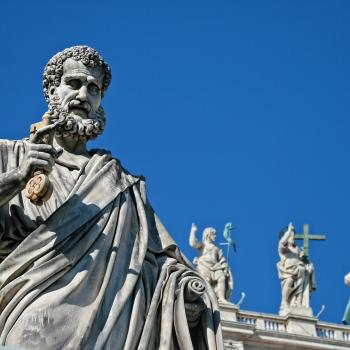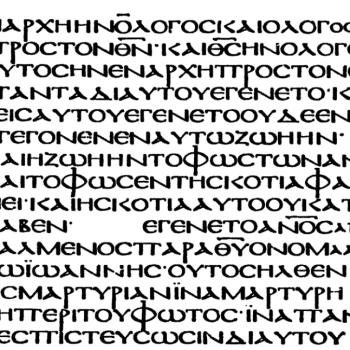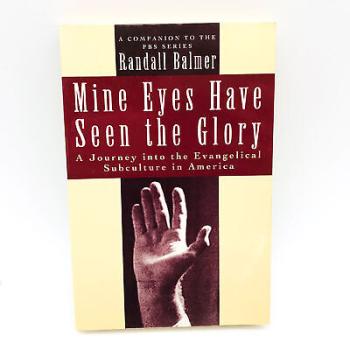
Christianity has gone through some significant changes during its two millennia of existence. Initially, you had the one “Church” that grew out of Jesus’s first-century ministry—though not all are comfortable acknowledging it as a formal “Church.” Some, on the other hand, are quite emphatic that Jesus—not Paul—is the source of the Christian “Church.” Regardless, not long after the death, resurrection, and ascension of Christ, you had some early divisions or squabbles between congregations (See, for example, 1 Corinthians 1:10-13). Additionally, early in Faith’s history, there were disagreements between Jewish and Gentile converts within the Church. (As an example, see Acts 13:45-46 & 15:23-30; Galatians 5:6 & 6:15) Of course, by the second century, groups like the Gnostic Docetists and the Marcionites were at odds as they sought to interpret what “authentic” Christianity should look like and what Christ’s “true” nature was. By the 5th century, Christianity was still a singular “denomination,” per se, but it unquestionably had divisions—like the Nestorians, the Copts, and the Donatists—which began to function in very denominational ways. During the “Great Schism” of the 11th century, Christianity “officially” broke into two strains—what would become known as Roman Catholicism and Eastern Orthodoxy. And finally, by the 1500s, the Protestant Reformation was well underway, and Christianity was very, very fractured indeed.
Contributing Factors
What some have termed the “decline” of the Papacy certainly helped facilitate the Protestant Reformation. A number of religiously devout Christians struggled to look past the non-pious behaviors of certain popes and priests. In some cases, their Faith in the Church was damaged. In other cases, their inclination to push back was stirred. Additionally, the scholastic movement (AD 1100-1700)—which inspired those with access to scripture to read with a more careful and critical eye—brought certain Catholic doctrines under fire. This served as kindling for the fire that would become the Reformation.
John Wycliffe
While many Christians attribute the Reformation to Luther’s 1517 act, nailing his “95 Theses” on the door of the Wittenberg Chapel—in truth, Luther was hardly the first of the reformers. Nonetheless, he and his followers certainly gave the Reformation the momentum it needed to have a lasting effect on Christianity.
John Wycliffe (AD 1320-1384), the English priest and professor, is traditionally known as “The Morning Star of the Reformation.” He was really the “beginning” of the Reformation movement, though he lived nearly 200 years prior to Luther. Wycliffe was deeply influenced by Augustine. Like Augustine, he felt that there were two Christian churches: (1) The true “invisible” Church—led by Christ—made up of those who were predestined to salvation. (2) And the “visible church”—headed by the Pope—which, sadly, included many evil or reprobate people. Consequently, Wycliffe questioned the Catholic Church’s right to temporal power. He questioned the Church’s right to wealth—feeling the leaders should live in poverty, as Christ had. He questioned the Church’s right to own significant amounts of land—and yet pay no taxes on those. (The Catholic Church-owned roughly 1/3rd of England at that time). Wycliffe also questioned the sale of indulgences, simony (or the selling of Church offices), the doctrines of Transubstantiation and Nominalism, and the notion that a priest or Pope was somehow “better” in the eyes of God than were the faithful laity. These are but a few of the many things Wycliffe struggled with and battled against.
Perhaps his most important contribution to the Reformation was Wycliffe’s view that the Bible should be translated into the language of the people. Part of his reasoning centered around his belief in the “invisible church.” The Bible belongs to the “invisible church”—not the “visible one” (in Wycliffe’s view). He explained: “The Bible is for the government of the people, by the people, for the people.” Thus, the Bible should be in the hands of the saved laity rather than in the hands of the Pope or corrupt priests. Consequently, Wycliffe—with the assistance of some Oxford University scholars—translated the Bible from Latin into English. He was responsible for the first English version of the Holy Bible.
Not surprisingly, in 1377, the Church condemned Wycliffe’s teachings as heretical. However, Wycliffe had friends in “high places,” and so he was not excommunicated at that point. Nonetheless, his writings were burned, and he was stripped of his teaching post at Oxford. The Archbishop of Canterbury (William Courtenay) called a committee to examine Wycliffe’s teachings and writings—with the goal of condemning him. However, according to tradition, at “the very hour and instant that they should go forward, a wonderful and terrible earthquake fell throughout all [of] England: whereupon divers [of those participating in the council], being affrighted, thought it good to leave off from their determined purpose.”
It is a miracle that Wycliffe avoided martyrdom—as he was unrelentingly in the face of the Catholic Church. He died of a stroke while sitting in Church (on December 31, 1384). Thirty-one years after his death (AD 1415), he was excommunicated for advocating and teaching some forty-five “heresies.” Forty-four years after his death (AD 1428), his bones were exhumed and burned, and his ashes were scattered on the River Swift. In a sense, Wycliffe died as a martyr “After the Fact.” But he lit the fuse which would lead to the explosion of protestant denominations.
Jan Hus
Jan Hus (AD 1374-1415)—often anglicized as John Huss—was a Czechoslovakian theologian and priest. In Prague, he learned of Wycliffe’s teachings and believed them—adopting many of them himself. He felt that the Bible was authoritative—more so than many of the Church’s positions. He believed that the Bible should be used as a sort of litmus test to reform practices or teachings that were contrary to scripture.
Hus reasoned that if a pope acted out of self-interest, his actions were not legitimate or justified (in the eyes of God). If a pope acted unrighteously, Hus argued, his authority was invalidated by that unrighteousness. Thus, Hus argued that the Bible had to be the final authority and, when a pope acted in accordance it its teachings, then only was his authority (as Pope) valid.
Hus was really not trying to change the “doctrines” of the Church, so much as question the authority and validity of acts performed by clergy who were immoral or corrupt. Of course, things went way beyond what he expected that they would.
Eventually, Hus openly attacked the sale of indulgences—which were being used to fund the Pope’s war against Naples. Related to this, he also insisted that God alone can forgive sins—not priests or popes. Like Wycliffe, Hus believed in the “invisible church,” which he believed was comprised of those predestined to be saved. He also spoke out strongly against simony.
In 1410, the Pope (Antipope John XXIII, actually) ordered Hus to quit preaching publicly. Hus refused to do so and, therefore, an ex-communication of Hus—which had been enacted through a Papal bull issued by the previous Pope—was officially enforced. Hus was no longer a member of the Church. However, he remained very popular—and continued to preach. Ultimately, Hus was asked to appear before the Council of Constance to answer to charges of heresy. He agreed to do so—but only if he was promised protection while there. He was promised but, once he showed up, that promise was withdrawn. Church Historian, Bruce Shelley, wrote: “Upon his arrival, he found himself instead of a victim of the Inquisition. The rule of the Inquisition was simple. If sufficient witnesses testified to the guilt of the accused, then he had to confess and renounce the errors or be burned… The panel of judges appointed by the council believed the witnesses against Hus and condemned him for heresies he had never taught.” Hus said he would recant the things he had taught if the council could show him—specifically from the Bible—wherein his teachings he had erred. Of course, the council made no effort to do so, and Hus was never really given a chance to explain his position. Out of frustration, he dropped to his knees and lifted his hands heavenward, saying: “O God I commend my cause to thee.” He was ordered to be burned at the stake. They placed a paper hat on his head, which had written upon it: “Ringleader of Heretics.” At his execution, he was given the last chance to recant. Hus is purported to have responded: “God is my witness that the evidence against me is false. I have never thought nor preached except with the one intention of winning men…from their sins. In the truth of the gospel I have written, taught, and preached; [and] today I will gladly die.” “I would not, for a chapel full of gold, recede from the truth.” “The truths I have taught will be sealed with my blood.”
Hus died singing (in Latin), “Christ, thou Son of the living God, have mercy upon me.” Hus’s courageous death only served to increase his prestige and popularity with the people. After his death, the Catholic Church tried to crush the movement that coalesced around his teachings with a series of crusades, but these failed, and the Church was forced to make concessions with the Hussites.
It is often pointed out that his last name—Hus/Husa—means “goose” (in Czechoslovakian). According to some, it is because of Jan Hus’s death at the stake that we have the familiar phrase, “His goose is cooked.”
Martin Luther
Luther (AD 1483-1546) was a German monk who later became a Roman Catholic priest. During his early years as a monk, he was constantly haunted by guilt. He saw an enormous gulf between his sinful self and the all-perfect God. He believed that any attempt to know God was “futile.” God would always be aloof and distant from humans. Guilt-ridden, Luther would punish himself by fasting for days at a time and would even scourge himself for his sins. He lived the rules of his monastic order to the letter, and abused himself in the form of “penance” along the way. He once said: “I kept the rule so strictly, that I may say that if ever a monk got to heaven by his sheer monkery, it was I. If I had kept on any longer, I should have killed myself with vigils, prayers, reading, and other work.”
When he read the Bible, he “saw the…God of judgement and not the merciful God of love.” And yet, one day, he was reading Romans 1:17, which states: “The just shall live by faith.” This struck him as it never had. Luther came to the conviction that salvation was by grace, through Faith in Christ. He was—in his own words—“Reborn.” He said the words of Paul “became to me a gate to heaven.” And he adopted the position of sola gratia—salvation by “grace alone.”
Luther didn’t reject the value or place of righteousness in the life of the practicing Christian. Indeed, he stated: “Good works do not make a man good, but a good man does good works.” Yet, in essence, he felt that “God’s grace was truly unmerited and unearned, and that no amount of good works on [one’s] part would make him more acceptable to God.” Consequently, Luther struggled with Biblical books that taught that works were somehow required for salvation. For example, in the Epistle of James, Luther stated it “does violence to Scripture.” He also noted that he felt there was no way to harmonize James and Paul. To anyone who could, Luther said, “I’ll put my doctor’s cap on him and let him call me a fool!” He called James’ epistle “a right epistle of straw.” For Luther, Faith in Christ saved us—not works! Thus, sola fide—salvation by “faith alone.”
When Luther became “enlightened,” the natural result was the rejection of the sale of indulgences—common in the Church of his day. Indulgences suggested that one could purchase “grace”—not by Faith, but by money, or by an act of some kind. According to Luther, if the Pope really did have the power to forgive sins, he should do it out of love and freely—and not because he wants to get money to build a building or fight a crusade.
Luther clashed over the issue of indulgences with a papal representative named Johann Tetzel, who had been sent out (by the Pope) to raise funds to build a new basilica in Rome. Tetzel was said to use catchy jingles, like: “As soon as the coin in the coffer rings, the soul from purgatory springs.” Or “Place your money in the drum—the pearly gates open, and in comes mum.” Tetzel told the people that they could get their loved ones out of purgatory for a simple fee. And, at the same time, earn credit against their own sins. Of the indulgences he sold, Tetzel said: “I have here the passports to lead the human soul to the celestial joys of Paradise.” According to Tetzel, “The Holy Father [i.e., the Pope] has the power in heaven and earth to forgive the sin, and if he forgives it, God must do so also.” His sales pitch went like this: “Listen to the voices of your dear dead relatives and friends, beseeching you and saying, ‘Pity us, pity us. We are in dire torment from which you can redeem us for a pittance.’ Do you not wish to?” All of this infuriated Luther—who had begun to see the Church as corrupt. So, in 1510, Luther headed to Rome, assuming that—if the Pope knew such things were happening in the name of the Church—he would surely be furious. Sadly, that was not the case. The Pope knew… and approved! After his visit to the Vatican, Luther lamented: “Let all who would live a holy life depart from Rome. Everything is permitted in Rome except to be an honest man.” In essence, it was in response to Tetzel that Luther wrote his famous “95 Theses.” Tetzel responded with his own “106 Theses.”
Luther reasoned that if salvation comes from Faith alone, then the intercession of priests is superfluous. You don’t need confession or penance assigned by a priest. You don’t need rites or sacraments. All you need is Faith in Christ. While one might see the logic in what Luther was arguing, of course, it also created a potentially “slippery slope.” One contemporary of Luther (the reformer Caspar Schwenckfeld) worried that the principle of justification by Faith alone—if emphasized too strongly or interpreted imperfectly—might lead Christians down an immoral path, wherein the way they lived lives of debauchery because they believed their Faith and God’s grace would override any consequences for their sins.
Like Wycliffe and Hus before him, Luther saw scripture as supreme—to be trusted over tradition or Church practice. He didn’t reject all traditions—but he measured everything against the Bible. During a debate (in 1519) Luther argued that neither councils nor the Pope was infallible—both could error. The Bible was the one safe source for truth.
Luther rejected a number of quintessentially Catholic doctrines, like Transubstantiation. He continued to feel that Christ was somehow physically present in the Eucharist, but he didn’t believe the bread and water became Jesus’ body and blood, and he rejected the idea that Jesus was actually being repeatedly offered on Calvary’s cross every time the Mass was celebrated.
Luther felt that the common life—the life of the laity—should be holy. So, he rejected monasteries and convents as purposeless. He preached a “priesthood of all believers”—in that all the faithful were God’s priests. This didn’t get rid of the need for a Church, in Luther’s mind. It simply meant that the Church was not the hierarchy but, rather, the united laity.
He felt that the Sacraments of the Catholic Church were mostly non-scriptural. Luther only accepted baptism and the Lord’s Supper—and Luther argued that baptism could only be valid if you had Faith. Thus, infant baptism was out of the question. However, Luther also argued that baptism could not be necessary for salvation—as that would suggest that a “work” was salvific—which denies salvation totally by grace.
Predictably, in 1521, Luther was condemned and commanded to retract his teachings. He was defiant, which was in alignment with his general personality. Luke Jan Hus before him, Luther reasoned that if the Church could show from the Bible that his teachings were wrong, he would happily recant. When his beliefs were not disproved from scripture, he famously announced: “Here I stand. I can do no other. God help me. Amen.” He said to his condemners: “My conscience is a prisoner of God’s Word. I cannot and will not recant, for to disobey one’s conscience is neither just nor safe.”
For the next year, Luther lived in hiding (at Wartburg Castle). He grew out his hair, got rid of his clerical robes, and went by the pseudonym “Knight George.” When Luther went back to Wittenberg, about a year later, he was not put to death. The Church knew that every step they had taken to censure Luther had only made him more popular. Putting him to death would all but make him a martyr and Saint in the eyes of his German followers. Consequently, the Church largely let him be. Of course, Luther didn’t start Lutheranism, but that tradition developed out of the ideas that Luther espoused.
This most famous of reformers died of natural causes at the age of 63 and was buried in the very Church where he posted his “95 Theses.”
Ulrich Zwingli
Ulrich Zwingli (1484–1531) was a Swiss Humanist and priest in Zürich. He reached conclusions similar to Luther’s, even before he had heard of Luther’s claims. Indeed, Zwingli and Luther met in 1529. Out of 15 subjects, they agreed on almost everything—except how it was that Jesus was “present” in the Lord’s Supper. On this, they could not agree. Zwingli saw it as a “spiritual” presence; Luther understood it to be more of a “literal” presence.
Zwingli’s Reformation was not a result of Luther’s, as some have erroneously claimed. The two were inspired by very different things. Luther’s Reformation grew out of a personal crisis he had regarding God’s love. Zwingli’s, on the other hand, grew out of his personal studies—and nothing else. Zwingli simply found things in the Bible that he felt didn’t agree with the practices and teachings of the Church. He was concerned with things like the adoration of saints, the veneration of relics, and the abuse of indulgences.
Zwingli’s basic position was this: get rid of everything in Christianity that cannot be found in the New Testament. No candles, no statues, no music, no icons! Worship should be simple and not filled with distractions. He wanted to return to primitive Christianity, as he saw it on the pages of the New Testament. Luther, on the other hand, accepted some non-Biblical practices and doctrines of Catholicism. The difference between the two reformers has been summarized in this way: “Luther allowed whatever the Bible did not prohibit; Zwingli rejected whatever the Bible did not prescribe.”
Among other things, one of the choices which got Zwingli in trouble with the Church was his choice to depart from the lectionary. He decided he would preach his own sermons from the four Gospels. Zwingli would preach whatever he found in the scriptures, even if it contradicted the Church’s official teachings. For example, the Bible does not teach that the Church should practice lent. So, when some of his parishioners ate meat during lent, he supported them by preaching a sermon against lent. Similarly, he wrote a letter to his bishop asking for permission to get married— since clerical celibacy was not a doctrine taught in the Bible. Of course, the bishop said “no”; But Zwingli married anyway and then publicly taught against clerical celibacy.
Zwingli’s approach to religion became so popular that the city of Zürich basically supported him in his reforms. He presented a list of some 67 reforms to the city’s leadership. They accepted them and—among other things—authorized priests and nuns to marry, removed Catholic images from all of the churches, and got rid of the Mass, replacing it with a simple service with preaching at its core.
Zwingli’s ideas became very popular and rapidly spread throughout Switzerland and into Germany. During Zwingli’s era, Swiss young men were in the habit of hiring themselves out as mercenaries in foreign countries. For a time, Zwingli served as a chaplain to the mercenaries. However, the horrors he witnessed convinced him that what they were doing was wrong. Zwingli actually died on the field of battle (in 1531), trying to defend the city of Zürich against some Catholic armies that had attacked.
Zwingli became known as “The 3rd man of the Reformation” (behind Luther and Calvin). He is also often referred to as “the forgotten Reformer.”
Other Reformation Movements
Certainly, more could be said regarding the Protestant Reformation and its beginnings. Others, like the Anabaptists (circa 16th century), Henry VIII (1491-1547), William Tyndale (1490-1536), John Calvin (1509-1564), John Knox (circa 1505-1572), and John Wesley (1703-1791), would have significant influence—some breaking ranks with the Catholic Church, and others as spin-off movements from the Church of England. In many cases—particularly as it relates to denominations that severed ties with Anglicanism—breakoff begat break off, and literally, thousands of splinter groups exist today as a result.
The Catholic Counter-Reformation
In response to the Protestant Reformation, the Catholic Church launched what has commonly been called the “Counter-Reformation.” It started in the late 15th century—and lasted throughout much of the 16th century. The bulk of the Catholic theology of the era was focused on refuting Protestantism. New monastic orders, like the Jesuits, were founded—seeking to convert the unconverted to Catholicism. The leadership of the Catholic Church was reformed in its morals and administrative practices. The Inquisition ramped up its search for heretics. The “Index of Forbidden Books” was created. And the 18-year Council of Trent was held.
In the end, the Counter-Reformation is understandable. After all, Protestantism had certainly taken its toll on Catholicism. One historian noted: “By 1570, the Reformation claimed more than two-thirds of the population of Germany and virtually all of England, Scotland, and Scandinavia. It had made strong inroads in…Belgium, Luxemburg…, the Netherlands…, in Hungary, [and] among the nobility in Poland. Although not numerically strong in France (possibly ten percent of the population), the adherents of the new Faith exerted an influence out of proportion to their numbers.”
One scholar called Protestantism a “‘modification of Catholicism’ in which Catholic problems remain, but different solutions are given.” There were really four questions that Protestantism sought to answer in a way that was different from Roman Catholicism: (1) How is a person saved? (2) Where does religious authority lie? (3) What constitutes “the Church”? and (4) What is the essence of Christian living? These questions were at the heart of Protestantism’s origins—and the Reformation really grew out of the answers that individuals like Wycliffe and Luther came up with.
Learn more about Protestantism in Patheos' Library of Religions.
3/14/2023 7:28:38 PM











